By Alex Trukan
When choosing to be compact in central areas and force the opposition teams down the wings, there will be times when players will have to deal with crosses. If the defending team is unorganised and unprepared, crosses will pose a major threat to them. Effective defending against crosses lies in ability to prioritise risks, think ahead and adapt clever positions in relation to the ball and attacking players. It is not only the players marking strikers and dealing with immediate danger in front of the goal that count. It is also players around the ball, covering spaces on the edge of the penalty box as well as applying pressure on the player that crosses it. Successful defending against crosses creates great opportunities to counter attack as the opposition team will be usually disorganised and potentially opened in central channels.
First stage of dealing with a cross is when you think it will come. This is the time when defenders need to scan where the strikers are, who can make a potential run and where. Body position should be also adjusted to see the ball and see the striker. If possible, forward runners should be kept in front, so defender stays between them and a goal. Players in front of the box should also narrow up and protect the width of the six yard box.
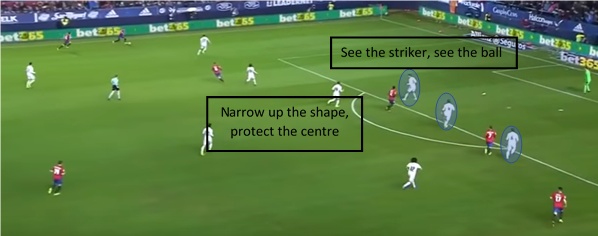
If possible, at least one player should try to apply pressure on the ball. Even if he can’t get there to stop it, the closer he gets, the more difficult it will be to cross. His position can also alter the flight of the ball, making it go higher or on a different angle than originally intended. Curving the run might be important to prevent outswinging/inswinging crosses and force one way.
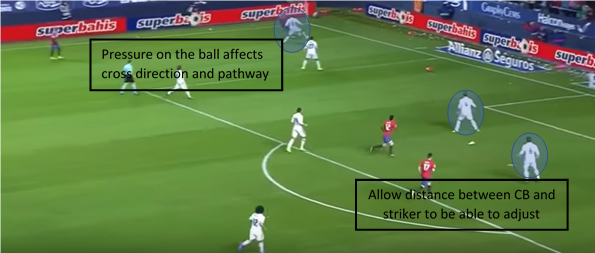
When the players think the cross will come, all the gaps should be minimised and positions adjusted. Two or three centre backs (depending what formation you play), should stay close to each other and remain in front of the goal. If any of the centre backs is too wide, this might leave a 1v1 situation with a lot of the space in front of the box. Opposite side full back should also see and track the runner onto the back post. This is where a lot of the goals are scored due to a delay in full backs reaction and letting the winger run past them.
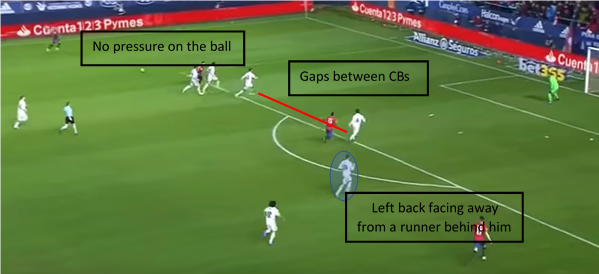
Below there is a good example of centre back scanning as the ball is played wide and he thinks the cross will come. The gap between centre backs is too big. As the ball is travelling, centre back can make adjustments. There is also a full back who can go and press the player on the ball.
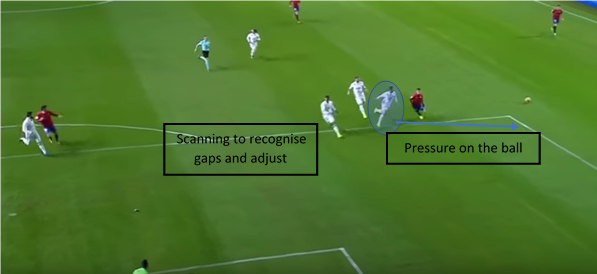
Second stage starts when defenders know that cross will be delivered. This is crucial time as this is when usually strikers will start to accelerate and change directions of their runs. Defenders should get their body lower, remain sideways and react to the movements. Defenders can also use their arm to feel where the striker is and because of that respond quicker.
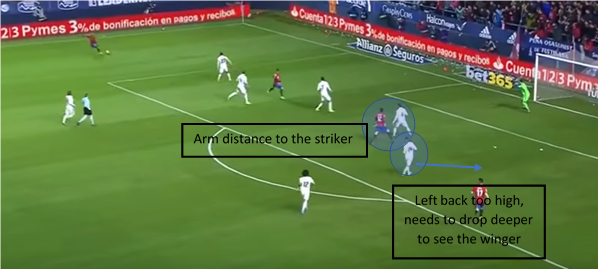
Last stage is when the cross is coming. This is all the adjustments take place and the priority shifts to react to where the ball flies. Players in front of the box should get ready to pick up second balls and at the same time be aware of any runners coming from behind.
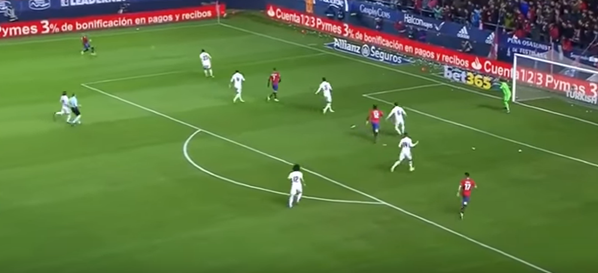
At this stage verbal communication becomes crucial as there is no time for more scanning and planning. Strong, short and quick verbal commands will aid understanding between players. Courage, desire and composure are also big part of successful defending against crosses. Players should look to start the counter attack, not boot the ball away.
By Alex Trukan, Development Coach, Nottingham Forest
@AlexTrukan


